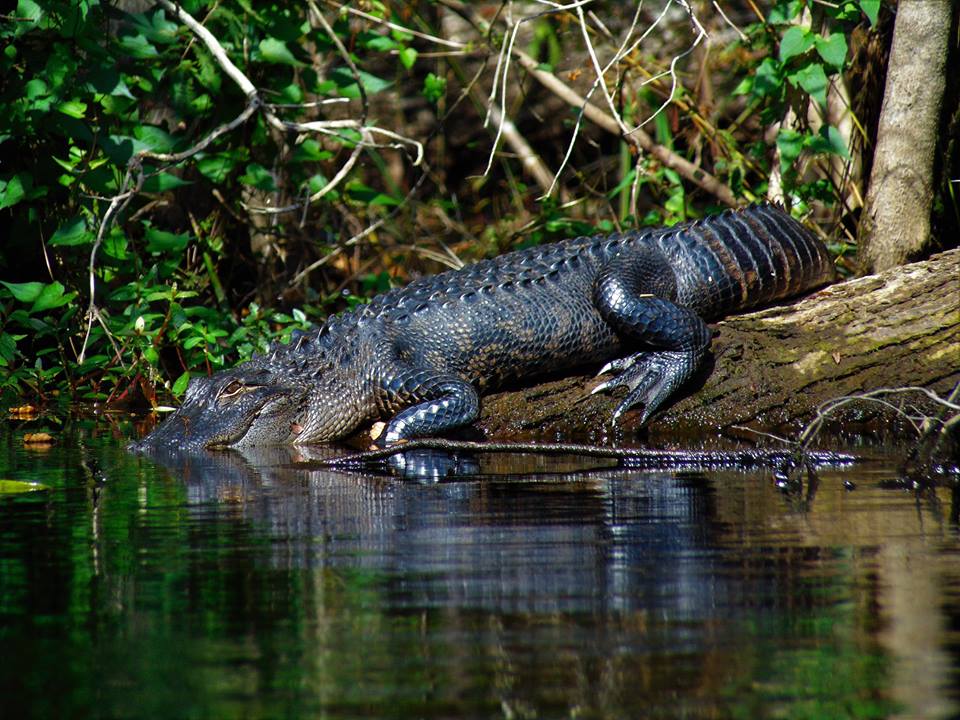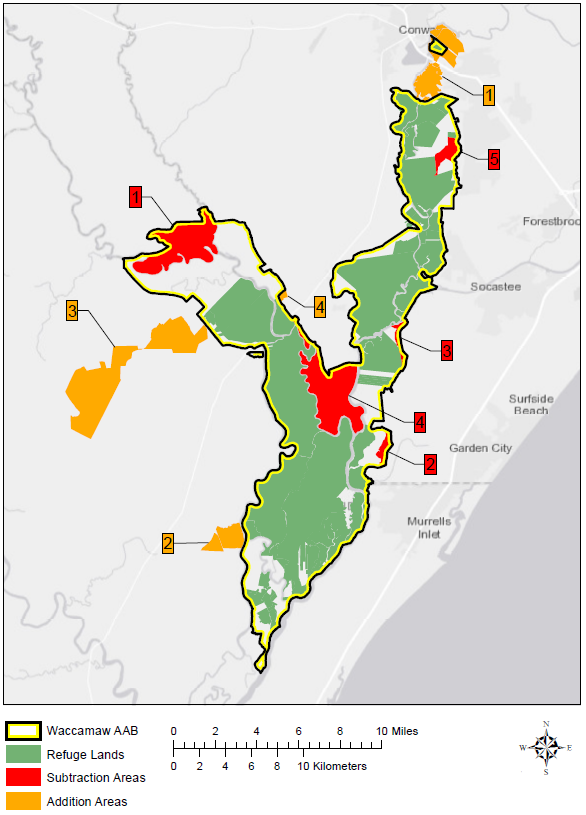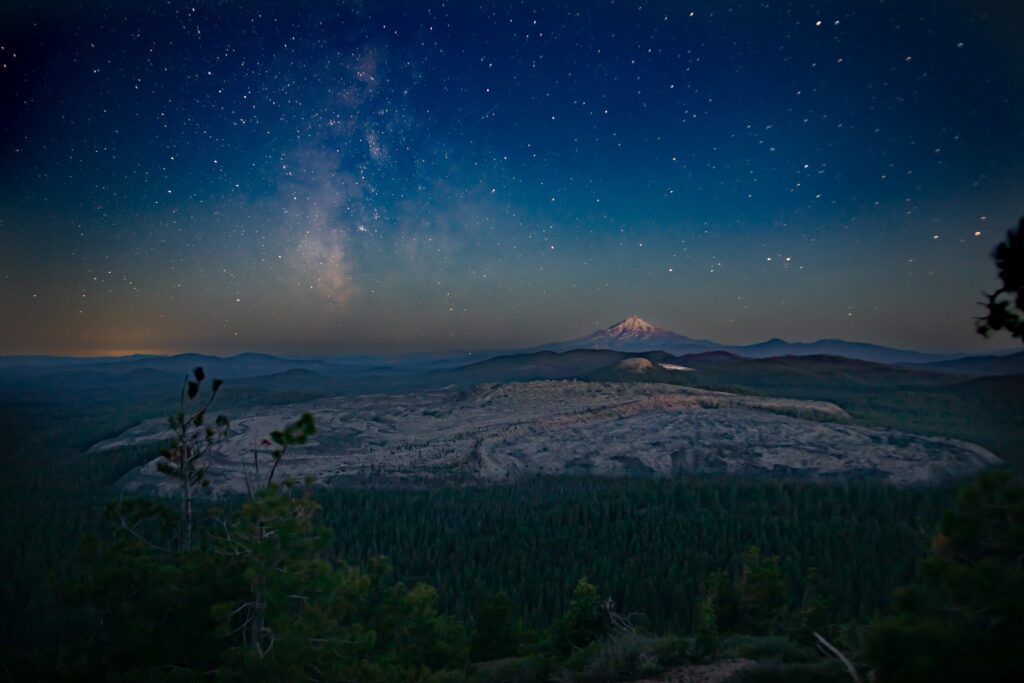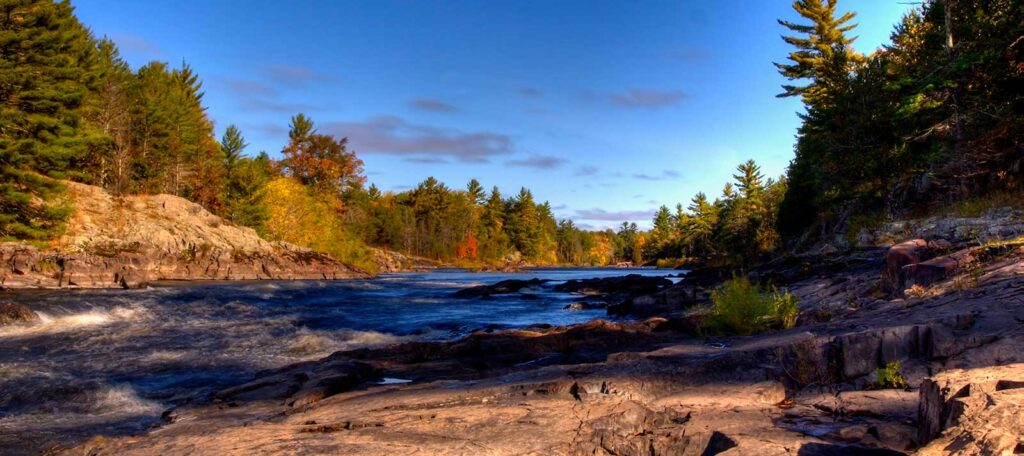Modern Problems Need New Solutions
Building Resilience for Wildlife and Communities at the Waccamaw National Wildlife Refuge

Communities across coastal South Carolina will benefit from land protections pioneered by the Waccamaw National Wildlife Refuge (WNWR) and its partners. Over the years, a warming climate, sea level rise and rapid development has posed a growing threat to wildlife in and around the Refuge. Faced with the need to provide additional habitat for animals and plants to thrive coupled with federal restrictions on expanding the Refuge, WNWR Manager, Craig Sasser, used an innovative approach. Working with a team of service staff and key partners, Sasser developed a ground-breaking proposal that allowed lands within the existing Refuge boundary that are unlikely to become federally protected to be exchanged for those in surrounding forests that can play a key role in improving the resilience of wildlife and communities along the Waccamaw River.
Using a collaborative process called a Landscape Conservation Design, Sasser worked with American Rivers, The Nature Conservancy and The Friends of Coastal South Carolina to look into every possible option for obtaining critical habitat without expanding the refuge boundary. After years of careful planning, an Environmental Assessment and Land Protection Plan for the pilot boundary modification program was released for public review and received numerous supporting comments. Sasser and Refuge partners’ hard work paid off in October 2019 when the boundary modification was approved by US Fish and Wildlife Regional Director, Leopoldo Miranda.
The Waccamaw National Wildlife Refuge is the first refuge in the country to successfully use minor boundary modification as an approach to conserve land and build climate resilience. “We could have never accomplished this monumental effort without the support and collaboration of so many partners” said Sasser.

The minor boundary modification will remove 6,849 acres of land from the Refuge which is either unlikely to be protected by the Refuge or no longer provides quality wildlife habitat due to local activities that have permanently changed the landscape. These areas are shown in red on the map. The current boundary will be changed so that 6,638 new acres, shown in yellow, will be added to the Refuge through the purchase of properties from willing landowners. These additional lands harbor critical riverside habitat that will help local wildlife withstand the effects of climate change, improve public access to the Waccamaw River, enhance recreational opportunities, support clean drinking water and reduce flood risks in surround communities.
“We applaud the Waccamaw National Wildlife Refuge for its leadership,” said Gerrit Jӧbsis with American Rivers. “Communities will benefit from the refuge’s vision as protected lands continue to ensure clean drinking water, safeguards against flood damage, and public access to some of the Lowcountry’s most treasured landscapes.”
The Waccamaw National Wildlife Refuge allows countless photographers, kayakers, fishers, and hikers, educators and their students, history enthusiasts, birders, and naturalists to enjoy the Waccamaw River. American Rivers and our partners have been at the forefront of efforts to promote all of the benefits the river provides to both people and nature by supporting the Refuge and encouraging local residents to enjoy and protect the Waccamaw River Blue Trail.
The Waccamaw River is a lifeline for North Carolina and South Carolina. It is critical to the region’s economy, environment, lifestyle, and health of local communities. It also serves as a major source of the region’s drinking water. With a changing climate, growing population, and competing needs for water, protecting the Waccamaw and its surrounding lands is more important than ever. The minor boundary modification will improve the resilience of local wildlife, provide additional opportunities for recreation for residents and visitors, and safeguard the well being of local communities.




1 response to “Modern Problems Need New Solutions”
What will happen to the land that has been removed?